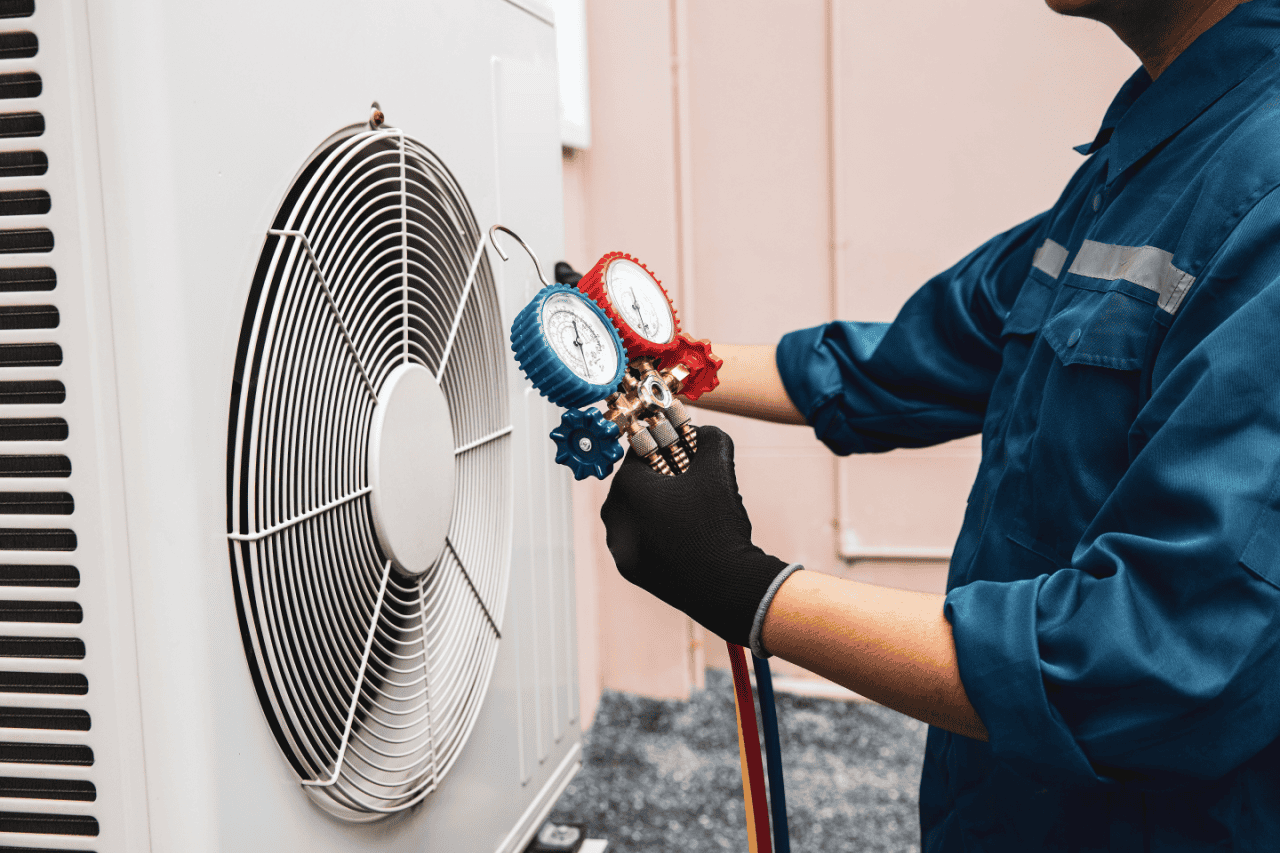There are new refrigerant requirements coming for apartment communities in the HVAC field for 2024 and beyond to replace R-22 and R-410a.

New Apartment Refrigerant Requirements Coming
For apartment communities, there is massive change ahead regarding refrigerants.
While the changes are not at the technician level yet – and won’t be until later this year regarding behavior and supplies – the financial impact is expected to be huge beginning in 2025, according to Paul Rhodes, founder, Directional Maintenance Services.
In response to regulatory changes, the refrigerant industry has been doing its best to create a refrigerant that will most adequately replace R-22 and R-410a. There are several alternatives, and each presents its challenges for apartment maintenance technicians, owners, and customers.
Last year, the Environmental Protection Agency (EPA) adopted a final rule accepting several refrigerant alternatives for use in new residential and light commercial air conditioners and heat pumps.
So, which one should you use? Well, that depends. The two main reasons refrigerants are being replaced are due to how much they deplete the ozone – measured as ozone depletion potential (ODP) – and much heat they trap in the atmosphere, measured as global warming potential (GWP).
The new refrigerants must have a low enough GWP to meet AIM Act standards.
The Most Common Apartment Refrigerant Replacement Contenders
Currently, the most common replacements to be used in systems designed for R-22 are R438A, which is also known as MO99, R422D, and R421A. These replacement refrigerants are often referred to as being “drop ins.”
“When that term is being used it often means you must change the oil, clean the line set, change the line drier, and then make sure compatible oil is being used,” says Mark Cukro, president of Plus One, Inc. “Think of it this way: An automobile owner could use several types of oil in a vehicle, but it is harmful to mix them or have multiple types in a system at the same time,” he says.
For systems designed to use R-410A, there is no replacement. Instead, the entire system will require replacement to be compatible with R-454B and R-32. These system changes are due to the new refrigerants being slightly flammable and require certain safety measures.
One big change is that both are listed as A2L by ASHRAE instead of the rating that R410A has (A1). The rating change means that due to increased flammability concerns, the new system is not allowed to be mixed with portions of the old system.
Paying Too Much For Insurance?
Get a FREE quote to insure your rental properties for less.
What’s Required by 2025
R410A is the apartment refrigerant being used in systems currently being produced. While it has no ozone layer effect, it does have a significant negative rating in terms of climate change, meaning a high GWP. There is no “drop in,” so the price of it will rise, by design, to encourage the change to the newer systems/refrigerant.
These are the systems that the AIM act requires to be no longer used after 2024 to force adoption of the new refrigerants. Parts for systems containing all refrigerant types will continue to be available if repaired, and may remain in service.
The new refrigerants found in residential systems required to be produced in Jan 2025 are either R32 or R454B. These are the A2L-listed refrigerants referenced above. They have no effect on the ozone layer and minimal impact on climate change.
Due to this distinction, there is no compatibility with R410A, which leads to the large cost that properties will need to absorb.
Example: If a straight cool/split system condensing unit is to be replaced to an A2L refrigerant system, the property is required to replace the evaporator/air handler as well. In the change from the R22 to R410A systems, if performed correctly, the property would only be required to replace the outside unit.
More refrigerant options are on the way, Cukro says. However, the industry overall has not yet really settled on one refrigerant as “the one” to be the industry-wide replacement, he says.
“Select one replacement refrigerant that suits you best and stay with that,” Cukro recommends, “so you don’t wind up with an unknown number of alternatives in the field that can’t be easily identified.
“While it may be tempting to purchase the least expensive refrigerant each time, if that leads to having six different refrigerants on the same property it may be counterproductive, very costly, and difficult to keep good records,” he said.
“R410a is still the choice refrigerant being used by contractors for new installations. So, keep everything simple to track, easy to work on and purchase, and make sure you have the correct equipment as the safety requirements are updated and change.”
On a positive note, the new refrigerants work quite well, are safer for the ozone layer and have a lower warming potential than the refrigerants being phased out.
Managing HVAC System’s Service History
The apartment industry will need to adjust and adapt as the new apartment refrigerant replacements emerge, Cukro says.
Rhodes, host of The Maintenance Mindset Podcast, says that in the short term, if maintenance teams know how to properly work with current refrigerants, the impact will be minimal procedurally because the same safe-use rules apply. The cost of materials (refrigerant and systems) will accelerate depending on the supply/demand economics.
Thinking longer-term, at the end of this summer, R410A equipment will begin to sell out as suppliers will not want overstock to carry into 2025. At the same time, manufacturing companies will transition their manufacturing lines to new refrigerants so that they have stock before January 2025. Prices will continue to increase.
Maintenance mobile work order apps such as AppWork help maintenance teams to track HVAC work-order data such as the number of callbacks, completion times, and service ratings. It automatically identifies HVAC work orders from the work-order description and uses that to categorize, prioritize, and even assign the work order, accordingly.
Technicians can include the Freon used during work orders and the Freon levels so the next time a technician works on the AC they can check the unit’s service history to see what they or another technician did the last time the unit was serviced.
Source: Rental Housing Journal















 Accessibility
Accessibility